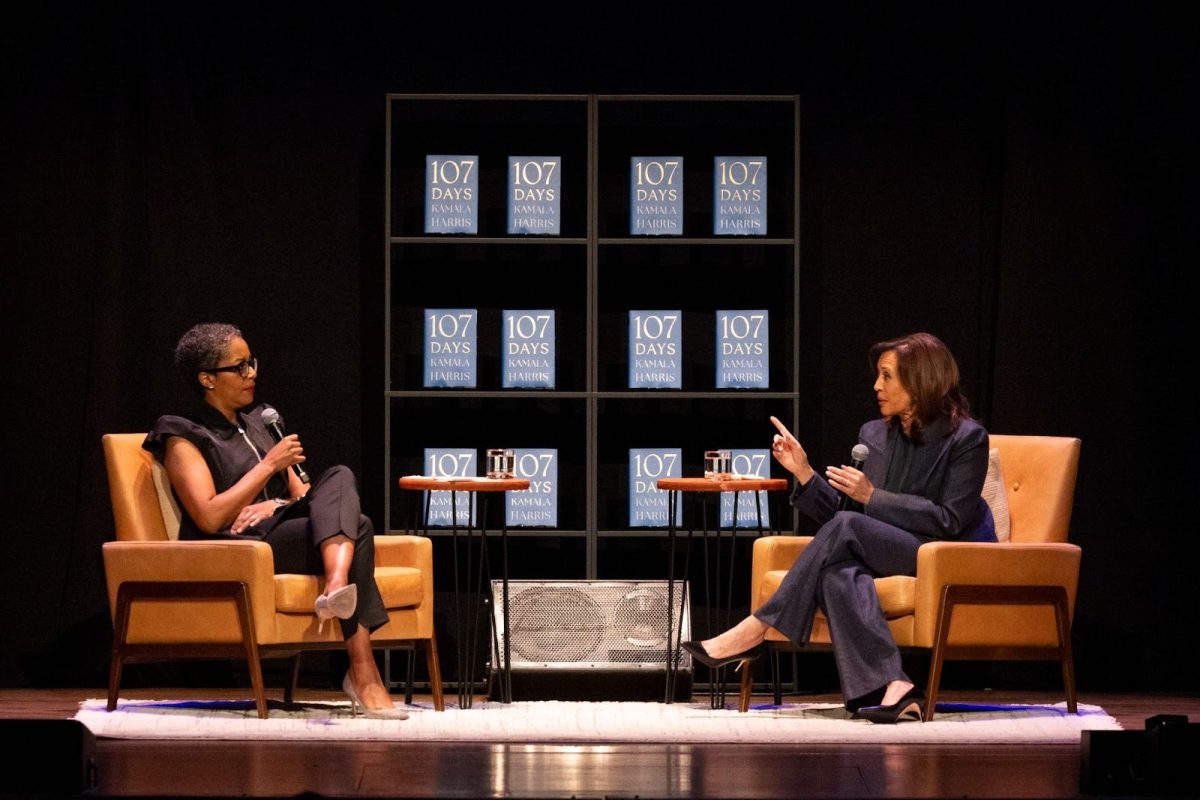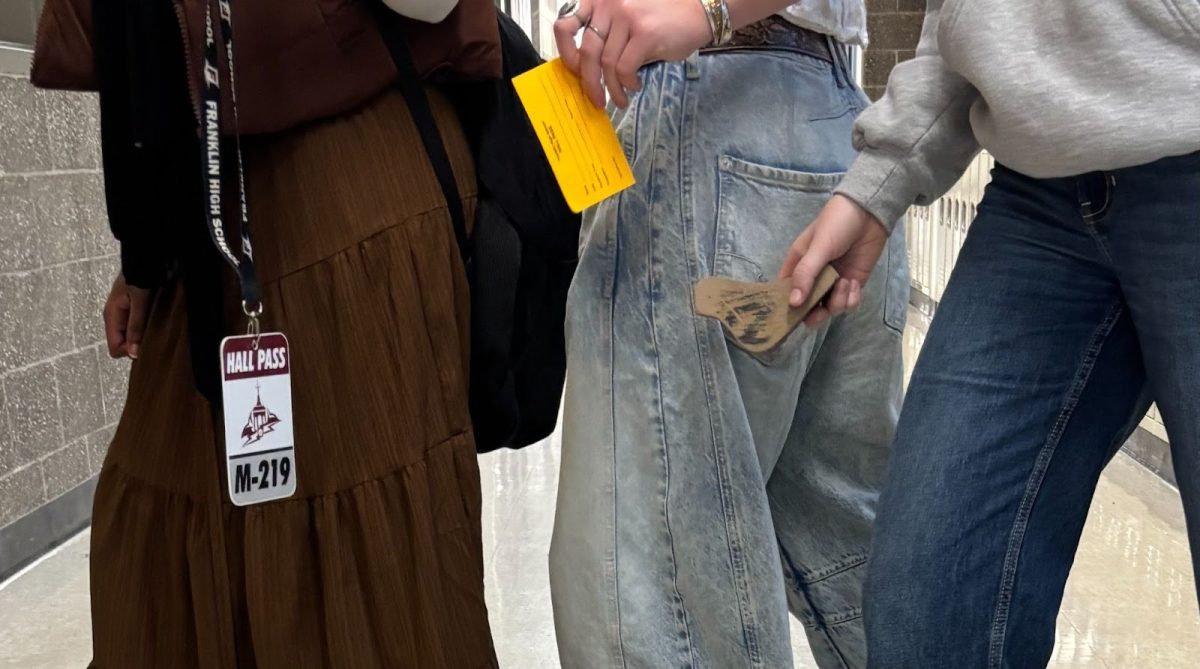
For a news and entertainment company whose headlines include “17 Tweets Only People Who Have Licked A Butthole Will Understand,” and “16 Friggin’ Noice Beard Transformations That’ll Have You Drooling On Your Phone,” a yearly revenue of 167 million is far from expected. But media company Buzzfeed is earning this income with ease, drawing in millions of monthly viewers and publishing thousands of articles annually. This media mogul appeals directly to younger generations with their flashy headlines, quizzes, and shorthand-style writing.
Lily Hillebrandt (11) says “the quizzes are a lot of fun, especially when you’re bored, and I enjoy community-based articles like the ones with product reviews. It’s a good way to get quick information … I use it mainly for entertainment but I will sometimes get quick news updates from it.” The website is incredibly popular among younger generations, claiming to reach three out of five U.S. millennials monthly, a global audience of 650 million viewers, and amassing over nine billion content views a month. The ease of accessing and navigating the site creates a massive audience that gets most of their news headlines from Buzzfeed. But that’s where one of the dangers can set in: those “quick news updates” aren’t as transparent as one would expect.
These updates come from a separate news page on Buzzfeed’s website, granting the preconceived notion that it would somehow be more credible, but even the headlines and content seem questionable in relation to news and serious reporting. Quizzes, articles chock-full of gifs, and headlines such as “Please, I Beg You, Do Not Fuck Up My Timeline With 280 Characters Of Bullshit” dominate the news page, creating something that one would expect from entertainment part of the website, not a professional news outlet.
A standout example of Buzzfeed’s minimal commitment to journalistic integrity came forth in January of 2017. The website published a 35 page dossier on Trump’s alleged collusion with Russia, creating a major political uproar with minimal results. Although seen as Buzzfeed’s “big breaks” in terms of news reporting, the dossier didn’t come without journalistic controversy. The article was published with a subheading that read “allegations are unverified, and the report contains errors,” which does go against the common journalism rule of checking and confirming the sources obtained. However, in the interest of not withholding potentially highly influential information from the public, the act of publishing the dossier with the subheading seems permissible. The larger issue lies within Buzzfeed’s motive for publishing: “Americans can make up their own minds about allegations about the president-elect that have circulated at the highest levels of the US government.” There is simply no way for U.S. citizens to “make up their own minds” when they do not have the resources to truly identify whether or not the files are credible. Furthermore, in a statement pertaining to the publishing of the dossier, editor Ben Smith defended with “Our presumption is to be transparent in our journalism and to share what we have with our readers. We have always erred on the side of publishing … As we noted in our story, there is serious reason to doubt the allegations.” Erring on the side of publishing whilst confirming serious doubt is a surefire way to consistently spread false information to the public.
In order to understand how Buzzfeed has been able to control so much of the way Americans read and interpret information, it is important to understand the formatting of the headlines and articles that make the website so appealing. Headlines typically contain what the reader will see and how they will react to it, and the number of times it will be seen, such as “25 Text Messages Guaranteed To Make You Laugh, Cringe, Or Both.” A headline on the same article frequently changes throughout the day, appealing to different readers. The articles tend to contain a short caption above each image or gif, requiring less reading and granting much more visual stimulation, and many news stories are accompanied by a short video with images and text briefly describing the story. Although Buzzfeed did not necessarily create this style of journalism, they have made it incredibly popular, and when something becomes popular, it’s easier to follow the trend than stick with tradition, risking irrelevance and economic downfall. Buzzfeed-style journalism has flooded news feeds, and even the Oregonian has adopted some of the same techniques the major company uses, using headlines like “14 of Oregon’s most overrated products we can’t help but love anyway.”
Lizzy Acker, the trending pop culture reporter at the Oregonian, says she often receives comments on her articles, calling them clickbait or “like Buzzfeed.” “When somebody writes something like that, it means they read my article,” she says. Acker attributes Buzzfeed’s success to their identity-based articles that target specific groups of people, similar to a Facebook timeline. She says older generations tend to accuse younger generations of sharing less real, honest, and rigorous reporting, but argues that credibility stays the same if children are taught how to identify false information. “The problem isn’t Buzzfeed, the problem is [that] we need to teach kids how to identify what’s true and what’s not.”
Kayla Greer, the program specialist at Center for Equity and Inclusion and a communications major at the University of Oregon’s graduate program in journalism, has a different take on Buzzfeed’s tactics. “I see value in that it’s accessible to a younger generation [with the marketing approach and look], but it isn’t a credible news source.” According to Greer, the biased, incredibly liberal articles geared towards one specific audience “creates an echo chamber.” The enforcement of one message by the same people validates it as a truth, and “[turns] public opinion into fact.” Some of the news will be accurate, but not the whole truth, and this is where it becomes dangerous. “[An] entire generation of people [are] misinformed,” says Greer. She believes Buzzfeed helps to discredit journalism, but that it doesn’t have to be that way. Traditional journalism and new media are currently mutually exclusive, greatly due to the political climate. If Buzzfeed spoke for both sides equally, or showed the opposing view, regardless of the writer’s opinion, Greer says it would become more credible.
Although Buzzfeed is continually creating massive impact on American society, media, and entertainment, success is yet to be seen in a long-term setting. As writer George Saunders puts it, “in a culture that is becoming ever more story-stupid, it is even more urgent that we learn to look passionately and technically at stories, if only to protect ourselves from the false and manipulative ones being circulated among us.” The responsibility of listening to both sides of a story now falls on the reader, which is often out of the scope and accessibility for them. Those who are willing to reach beyond their beliefs and political views to hear what the opposition has to say will come out all the wiser.

































